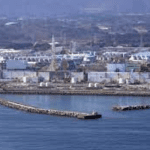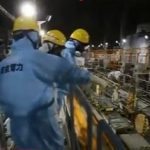The head of the International Atomic Energy Agency (IAEA), Rafael Grossi, has met with locals to allay their worries about the security of Japan’s plan to discharge treated radioactive water from the destroyed Fukushima Daiichi nuclear power station into the ocean.
In a crucial step toward decommissioning the power plant, which was destroyed in the 2011 earthquake and tsunami, the IAEA said on Tuesday that a two-year review found Japan’s plans for water release would have a negligible environmental impact.
The initiative has long been opposed by Japanese fishing unions, who claim that it would reverse efforts to restore reputational harm caused by numerous nations’ bans on select Japanese food products due to radiation concerns. Japan periodically analyzes the safety of seafood from the Fukushima region.
Grossi joined the meeting after the remark, where representatives of local fishing communities and government groups were in attendance, shaking hands with each of them before assuring them of the safety of the plan.
He will visit the wrecked plant on Wednesday, where he will inaugurate an IAEA office on site that will monitor the release of the water, which is expected to take 30 to 40 years.
The Japanese government is looking to start releasing water as early as August.
Some neighbouring countries have also raised concerns over the threat to the environment, with Beijing emerging as the biggest critic.
Yoshimasa Hayashi, Japan’s foreign minister, is planning a meeting with his Chinese and South Korean counterparts on the sidelines of a South-East Asia group conference in mid-July, according to the Yomiuri newspaper on Wednesday.
Prime Minister Fumio Kishida said on Tuesday that the IAEA’s approval would help Japan win acceptability both locally and internationally.
According to Japan, the water has been treated to remove most radioactive components except tritium, a hydrogen isotope that is difficult to separate from water. Before being discharged into the Pacific, the treated water will be diluted to much below internationally acceptable levels of tritium.














